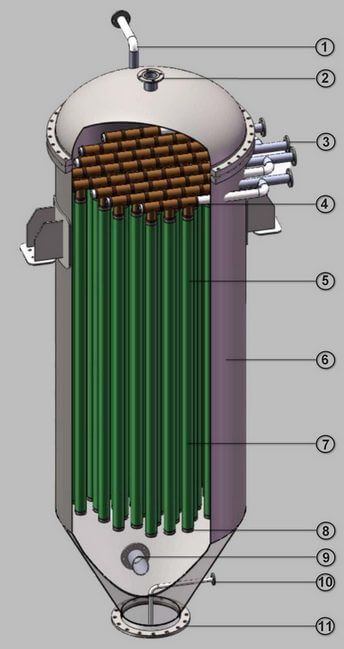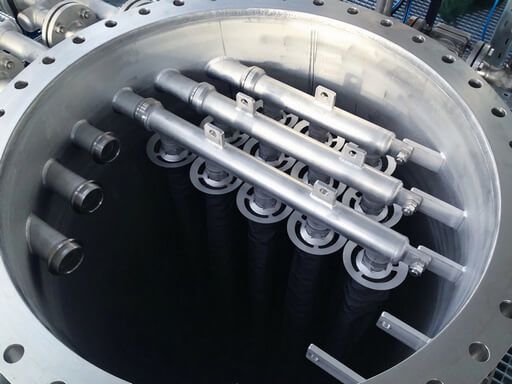Candle Filters, like all pressure filters, work in batches and can be found in process lines and applications requiring effective low moisture cake filtration or a high degree of polishing. Candle Filters are also used for thickening, removing part of the liquid phase as filtrate to form concentrated flowable slurry. Because Candle Filter can operate with very short cycle periods and high filtration rates while the cakes are still thin, this mode of operation is achievable. When used for thickening, one of the advantages of Candle Filters is their clear filtrate, which is due to gravity. Thickeners, on the other hand, produce overflows that invariably contain some fine suspended particulates.
The cylindrical shape of the parts that hold the produced cake is another hallmark of Candle Filter. In contrast to Plate, Leaf, and Filter presses, this shape improves the filtration area as cakes thicken, partially compensating for the drop in filtering rates. Because Candle Filters are autoclaved and built for hazardous applications where high pressure and safe operation is necessary, they are ideal for handling flammable, poisonous, and corrosive compounds.
They can also be easily jacketed for situations where hot or low temperatures must be maintained. These functions are not available on Filter presses, which need the opening of one plate to the atmosphere at the end of each cycle to allow cake discharge. There are candle filters in various sizes available and the bigger types can be 200 m2 in surface and contain 250 or more filters fitted into vessels with diameters of 2.5 to 3.0 meters. Although the operating pressure range is relatively broad, most Candle Filters function at 6 bars.

There are three main components of the Candle Filter:
- Vessel.
- Elements for filtering.
- Mechanism to discharge cake.
All these components can be built from exotic construction materials and heated to satisfy process requirements. The filter feed is always placed at the bottom of the vessel to allow the intake slurry to flow up. This is essential to keep solids quickly installed in a consistent suspension and to ensure that uniform cakes are created.





